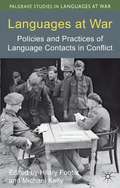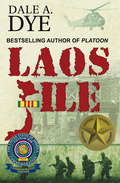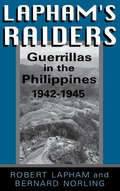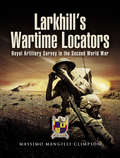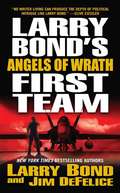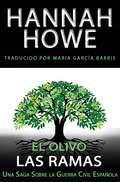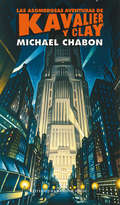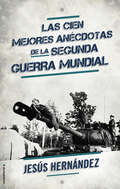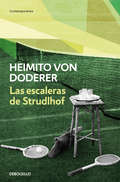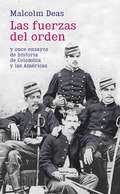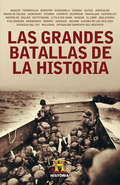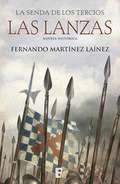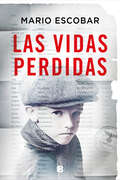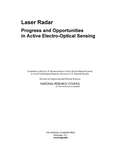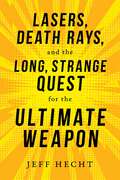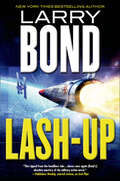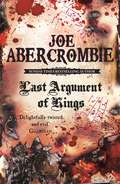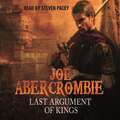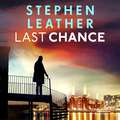- Table View
- List View
Languages at War
by Michael Kelly Hilary FootittThrough detailed case studies ranging from the 18th century until today,this book explores the role of foreign languages in military alliances, in occupation and in peace building. It brings together academic researchers and practitioners from the museum and interpreting worlds and the military.
Laos File (Shake Davis Series)
by Dale A. DyeMilitary Writers Society of America 2011 Book Award winner: From the bestselling author of Platoon comes a military thriller about one Marine’s quest to leave no POW behind. The death of a salty old senior noncommissioned officer who ran special operations in Vietnam leads US Marine Gunner Shake Davis on a shocking and potentially lethal mission to find out what happened to hundreds of American prisoners of war. With “plenty of action and lots of military detail” (Vietnam Veterans of America), Laos File is a great read for fans of Tom Clancy and W. E. B. Griffin.
Lapham's Raiders: Guerrillas in the Philippines, 1942–1945
by Robert Lapham Bernard NorlingA US soldier recounts his extensive guerilla campaign against the Japanese occupation of the Philippines in this thoroughly researched WWII memoir.On December 8th, 1941, the day after the attack on Pearl Harbor, the Japanese invaded the Philippine Islands, catching American forces unprepared and forcing their eventual surrender. Among the American soldiers who managed to avoid capture was twenty-five-year-old Lieutenant Robert Lapham, who played a major role in the resistance to the brutal Japanese occupation.After emerging from the jungles of Bataan, Lapham built and commanded a devastating guerrilla force behind enemy lines. His Luzon Guerrilla Armed Forces evolved into an army of thirteen thousand men that eventually controlled the entire northern half of Luzon's great Central Plain, an area of several thousand square miles. In Lapham’s Raiders, Lapham and historian Bernard Norling reconstruct the drama of the LGAF through letters, records and the recollections of Lapham and others.Lapham’s Raiders sheds light on the clandestine activities of the LGAF and other guerrilla operations, assess the damages of war to the Filipino people, and discuss the United States' postwar treatment of the newly independent Philippine nation. It also examines Japan's wartime failures in the Philippines and elsewhere, and of America's postwar failure to fully realize opportunities there.
Larkhill’s Wartime Locators: Royal Artillery Survey in the Second World War
by Massimo Mangilli-Climpson"Artillery survey suffered during the pacifist inter-war period but the war in North Africa highlighted its importance. By the end of 1942 ten major survey units had been formed. Nine were conventional serving in all the main theatres, including the Far East. They played a key part in victories such as El Alamein, Anzio, Caen and Imphal, with their flash-spotting, sound-ranging and surveying of gun lines. A tenth regiment was secretly involved tracing the flight of Hitlers V1 and V2 rockets in order to locate their launch bases.These soldier-scientists were all trained at the School of Survey, Larkhill, on Salisbury Plain. Their work took them to the front line and a considerable number were casualties or became POWs.This is the story of the contribution of these 4,000 men who made up the Survey Regiments. It tells of the heroes, such as Robert (Tug) Wilson of the SBS and the skilful men whose actions under the most difficult and dangerous conditions have received little acknowledgement until now."
Larry Bond's First Team: Angels Of Wrath (Larry Bond's First Team #2)
by Larry Bond Jim DeFeliceNew York Times bestselling authors Larry Bond and Jim DeFelice deliver fresh thrills and unexpected twists in this latest installment of their electrifying series, Larry Bond's First Team: Angels of Wrath.Led by CIA agent par excellence Bob Ferguson, the Team pitches in to help the FBI investigate a radical group of zealots who want to create a "post-Christian" era by instigating a catastrophic showdown in Jerusalem. But Ferg and company soon discover the cult has strange connections to the Iraqi resistance and to a Syrian arms dealer. Enlisting the help of Thera Majed, a beautiful paramilitary and an expert on Middle eastern relations, the team breaks up to track each link. They seek to stop anything catastrophic from happening before the President arrives in Iraq for the next round of elections. Their quarries lead Team members into an immensely complicated world of fanatical terrorists, each potentially dangerous. . . but who among them is the next to strike? Uncertain of the most imminent threat, the Team finds that they have landed in the midst of an operation headed by Israel's famous Mossad, and are ordered to cooperate with the Israelis . . . but are the Israelis cooperating with them? Unsure of their allies, the Team realizes that they are on the trail of two completely different attacks whose targets are thousands of miles apart. Both operations are intended to trigger a vast religious war. With the clock ticking down, can the team extinguish the spark of Armageddon? At the Publisher's request, this title is being sold without Digital Rights Management Software (DRM) applied.
Las 50 grandes masacres de la historia
by Jesús HernándezA través de los cincuenta hechos históricos que aquí se relatan, el lector tendrá ante sí un aciago panorama de lo que ha significado la masacre a lo largo de la historia. El asesinato masivo de personas inocentes ha sido, desgraciadamente, una constante en la historia de la Humanidad, desde el exterminio de los habitantes de Jericó en el 1.500 a.C. hasta los grandes atentados terroristas del siglo XXI, pasando por la aniquilación de los cátaros en 1209, la Matanza de San Bartolomé en 1572, la masacre de Wounded Knee en 1890, el Bloody Sunday de 1972 o el aplastamiento de la revuelta de 1989 en la plaza de Tiananmen. A través de los cincuenta hechos históricos que aquí se relatan, el lector tendrá ante sí un aciago panorama de lo que ha significado la masacre a lo largo de la historia. Y podrán llegar a una conclusión tan inesperada como inquietante; sólo una minoría de los perpetradores de esas carnicerías pagarían por sus crímenes y, además, muchos de ellos alcanzarÌan el reconocimiento público y los máximos honores, incluido el Premio Nobel de la Paz.
Las Ramas: El Olivo
by Hannah HoweLa joven enfermera Heini Hopkins viaja a través de Francia hacia España donde espera descubrir el destino de su novio, Deiniol Price, voluntario en las Brigadas Internacionales. Espera ser enfermera de las tropas Legalistas que luchan contra el fascismo en la Guerra Civil española. En un viaje parecido, pero sin conexión alguna, la novelista Naomí Parker viaja a España donde pretende escribir notas de propaganda en favor de los fascistas. También desea encontrarse con el hombre de sus sueños, el apuesto piloto, Príncipe Nicolás Esteban. Mientas Naomí disfruta de la vida acomodada en España, Heini va a parar a la línea del frente donde atiende a un incontable número de heridos. Los Legalistas se preparan para el combate con palos en lugar de armas mientras los fascistas les bombardean desde aviones alemanes. En esas circunstancias tan desiguales, ¿cómo puede sobrevivir Deiniol? Además, ¿cómo puede Heini mantenerse fiel a sí misma entre todo ese caos? MIentras busca las respuestas, Heini aprende a conocerse as í misma así como duras lecciones sobre el amor y la guerra.
Las asombrosas aventuras de Kavalier y Clay
by Michael ChabonEn la impresionante recreación del Nueva York de los años cuarenta que ilumina esta historia caben el amor, los celos, la bohemia y las reflexiones sobre la creación artística, sin olvidar la ternura y el humor. Nueva York, 1939. Joe Kavalier, un joven artista entrenado en las artes del escapismo del maestro Houdini, acaba de lograr su mayor proeza: huir de la Praga ocupada por los nazis. Su objetivo es triunfar en América, ganar dinero rápidamente, y así poder liberar a su familia de las garras del imperio nazi. Joe se instala en Brooklyn, donde entabla amistad con su primo Sammy Clay. Los dos chicos se lanzan al incipiente mercado del cómic, creando un superhéroe judío que viajará a Europa para luchar contra Hitler. Galardonada con el Premio Pulitzer 2001, Las asombrosas aventuras de Kavalier y Clay -como Pastoral americana, de Philip Roth, o Submundo, de Don Delillo- es una obra maestra universal. La crítica ha dicho...«Uno de los tres libros más importantes de mi generación.»Bret Easton Ellis «Una prosa que puede cubrir seiscientas páginas de fantasía e historia social de un solo salto.»Time
Las cien mejores anécdotas de la Segunda Guerra Mundial
by Jesús HernándezUno de los libros de referencia de historia militar en la última década en nuestro país. Un libro repleto de aquellos sorprendentes detalles, de lo cotidiano del conflicto, que también fueron decisivos para definir el cambio de rumbo de la Historia. Jesús Hernández ha investigado un poco más allá de estrategias y versiones oficiales para crear este anecdotario, y arrancar así una sonrisa o alguna que otra cara de asombro.El libro aporta, además del centenar de anécdotas, otro capítulo destinado a curiosidades y un espacio destinado a pequeños récords, como la bomba más pesada o el piloto más condecorado
Las escaleras de Strudlhof
by Heimito von Doderer«Un gigante de la novela alemana contemporánea.»The Times Las escaleras de Strudlhof es a un tiempo el retrato magistral de la sociedad vienesa entre 1911 y 1925, una novela panorámica sobre el fin de una época y una de las más altas cumbres literarias del siglo XX. La figura central de la trama es el ex teniente y empleado público Melzer, un hombre corriente, casi trivial, que en el ocaso de Austria-Hungría empieza su carrera militar en Bosnia para luego luchar con el ejército imperial en la Gran Guerra de 1914. Al finalizar la contienda regresa a Viena y se da cuenta de que el poder se sustenta de un nuevo tejido de relaciones. Reseña:«Al nivel más alto: Marcel Proust, Thomas Mann, Robert Musil.»Le Figaro
Las fuerzas del orden
by Malcolm DeasEn estos doce ensayos escritos en las últimas dos décadas, Malcom Deas habla sobre historia militar y económica en Colombia historia política venezolana y fronteras y choques culturales en las Américas. Con gran sentido de los contextos y un uso perspicaz de las fuentes este texto ilumina personajes, hechos y fuerzas, que en su mayoría comprenden episodios de finales de la Colonia y de las posteriores jóvenes repúblicas. La prosa de Malcolm Deas se nutre de sutil ironía y humor lúcido, y sus ensayos, por polémicos que resulten, tienen la ventaja de ser entretenidos. Armas, letras, economistas y tempranas economías, historia electoral, Francisco Miranda -el pensador y el militar-, fronteras culturales en América, y hasta el traslado de los huesos de Jorge Isaacs, se conjugan en un libro abierto a los descubrimientos. Su diversidad y amplitud componen un panorama que anima a la historia comparada, y que individualmente, y en suma, son una defensa del ensayo como género.
Las grandes batallas de la historia
by Canal HistoriaLas treinta batallas que derribaron imperios, frenaron invasiones, hicieron triunfar revoluciones y forjaron el mundo moderno tal y como lo conocemos. De Trafalgar a las Malvinas, de las Termópilas a Little Big Horn, de Navas de Tolosa a la batalla del Ebro, de las Cruzadas a Vietnam, de las legiones romanas a los tercios españoles, de los caballeros medievales a los kamikazes japoneses, Las grandes batallas de la historia es un apasionante viaje por los conflictos armados más famosos de la historia bélica mundial. Con la exhaustiva investigación de las fuentes y la amenidad divulgativa que caracterizan a Canal de Historia, este volumen recrea asedios agónicos como la toma de Jerusalén, batallas puramente aéreas, como la de Inglaterra en 1940, o la mayor operación naval de la historia llevada a cabo el Día D, sin olvidar el papel decisivo de los más famosos estrategas: Aníbal, Alejandro Magno, Julio César, Nelson, Napoleón, Toro Sentado o Churchill. Causas y consecuencias, armamento y táctica, éxitos y fracasos, curiosidades y anécdotas... todos los ángulos tienen su análisis, entretenido y didáctico, en un libro que ningún aficionado a la historia puede perderse. Reseña:«Nombres cargados de épica, hazañas y horrores bélicos narrados con el pulso que les ha hecho famosos en la televisión.»El Cultural
Las lanzas (La senda de los Tercios #1)
by Fernando Martínez LaínezFernando Martínez Laínez novela en esta serie la historia de uno de los ejércitos más importantes de todos los tiempos: los Tercios de Flandes, un ejército que marcó un hito en la historia militar universal. «La senda de los Tercios» es una obra con una labor de documentación impresionante y de rigor histórico colosal. «Ante todo era un soldado, y en las banderas, con sus camaradas, pasó sus mejores años. De soldado, tal como había vivido, pensaba fenecer, pobre y solitario, pero honrado. Todo lo honrado que se puede ser después de haber luchado en Flandes.» Las lanzas narra el primer tercio de la guerra de Flandes, centrándose en dos personajes principales: un soldado de nombre Alonso de Montenegro y el general Ambrosio Spínola. La historia del primero comienza cuando, con solo diecisiete años, se alista para huir de las consecuencias de dos crímenes desangre. Conocía a Federico Spínola, hermano de Ambrosio, de su época de estudiante, y este lo hace llamar para que sirva a su mando. Federico pretendía llevar la guerra hasta Inglaterra, pero muere sin poner en práctica su plan. Ambrosio Spínola siempre ha envidiado la inteligencia y capacidad de su hermano menor, y se propone emularlo. Toma bajo su mando a Montenegro y dirige una serie de campañas, muchas de ellas con éxito, pero lidiando siempre con la falta de recursos, sobre todo económicos. Fernando Martínez Laínez relata en esta historia novelada las hazañas de los legendarios Tercios en campañas tan relevantes en la historia militar española como las de Ostende, Frisia y Breda.
Las tres Españas del 36
by Paul PrestonUna perspectiva radicalmente distinta, original e innovadora de la compleja trama de la Guerra Civil española. Paul Preston, probablemente el más importante hispanista de la actualidad, ofrece en este ensayo una perspectiva completamente innovadora de la guerra civil española a partir de las biografías de los personajes que marcaron con su paso el devenir de todos, como José Antonio Primo de Rivera, Manuel Azaña y Francisco Franco. Descifra así un país distinto, la tercera España, que, con el paso del tiempo, desembocaría en la España democrática de hoy, y rompe con el tópico de que la Guerra Civil fue una lucha entre extremos llevada a cabo por fanáticos de la derecha y de la izquierda, fascistas y comunistas, católicos y ateos, campesinos hambrientos y terratenientes ricos. Este libro -galardonado con el Premio Así Fue 1998- es una reflexión sobre la profundidad del drama sufrido por los españoles, una reflexión conmovedora que no se olvidará fácilmente. Reseñas:«Paul Preston es un historiador que se distingue por el rigor científico de sus trabajos y por un permanente esfuerzo de objetividad.»Luis María Anson, El Cultural «Un libro de los que no se leen, porque se devoran.»La Vanguardia
Las vidas perdidas
by Mario EscobarUno de los autores españoles más traducidos y leídos en Estados Unidos y en otros catorce países. Más de 300.000 ejemplares vendidos. Esta narración impecablemente documentada nos cuenta la increíble historia de una mujer dispuesta a sacar la verdad a la luz. Una novela basada en hechos reales que recupera uno de los más conmovedores testimonios de humanidad y altruismo. Esta es la apasionante historia de una mujer, Valérie Portheret, que descubrió en un archivo olvidado los nombres de ciento ocho niños y dedicó el resto de su vida a devolverles la identidad. Una joven decidida a mostrar la verdad. Lyon, 1992. Una estudiante tiene que enfrentarse a un país y a una universidad que quieren pasar página y dejar atrás el pasado, pero el hallazgo de una vieja caja con las fichas de unos niños judíos, en paradero desconocido desde el verano de 1942, la anima a indagar en el pasado de su ciudad y a rescatar del olvido a un puñado de héroes anónimos. Un grupo de personas corrientes dispuestas a arriesgarlo todo. Lyon, 1942. Los nazis han aprobado la «solución final» y empiezan las deportaciones masivas de cientos de miles de judíos provenientes de los países ocupados, entre ellos, Francia. Klaus Barbie, un cruel funcionario de las SS, ha recibido la orden de expulsar a todos los judíos de la región, pero un grupo de hombres y mujeres intentará, en una endiablada carrera contrarreloj, salvar a los más pequeños antes de que sea demasiado tarde. Más de un centenar de niños perdidos a quien devolver sus vidas. Mientras por las calles de Lyon corre un pasquín con el lema «No os llevaréis a los niños», varios miembros de asociaciones humanitarias buscan la forma de salvar a todos los menores de dieciséis años de los campos de concentración alemanes. Un pueblo unido para salvaguardar su dignidad y demostrar así al mundo que, incluso en sus horas más oscuras, el bien puede vencer al mal. Reseñas:«Una mirada importante y sensible al triunfo del espíritu humano».New York Journal of Books «El relato de Escobar atrae a los lectores con descripciones convincentes, emotivas y deslumbrantes, mientras profundiza en la naturaleza humana, la maldad, los prejuicios y el perdón».Historical Novel Society «Mario Escobar se ha convertido en un detective de lupa y archivo histórico. Sus últimas obras se han propuesto novelar hechos apartados de un manotazo de nuestro pasado y revivir personajes olvidados».Manuel P. Villatoro, ABC Historia «Mario Escobar saca el lado más humano de la gente».Nacho Ares, SER Historia «Las novelas de Mario Escobar son una vacuna contra el mal».Herrera en COPE
Laser Radar
by National Research Council Division on Engineering and Physical Sciences Committee on Review of Advancements in Active Electro-Optical Systems to Avoid Technological Surprise Adverse to U.S. National SecurityIn today's world, the range of technologies with the potential to threaten the security of U.S. military forces is extremely broad. These include developments in explosive materials, sensors, control systems, robotics, satellite systems, and computing power, to name just a few. Such technologies have not only enhanced the capabilities of U.S. military forces, but also offer enhanced offensive capabilities to potential adversaries - either directly through the development of more sophisticated weapons, or more indirectly through opportunities for interrupting the function of defensive U.S. military systems. Passive and active electro-optical (EO) sensing technologies are prime examples. Laser Radar considers the potential of active EO technologies to create surprise; i.e., systems that use a source of visible or infrared light to interrogate a target in combination with sensitive detectors and processors to analyze the returned light. The addition of an interrogating light source to the system adds rich new phenomenologies that enable new capabilities to be explored. This report evaluates the fundamental, physical limits to active EO sensor technologies with potential military utility; identifies key technologies that may help overcome the impediments within a 5-10 year timeframe; considers the pros and cons of implementing each existing or emerging technology; and evaluates the potential uses of active EO sensing technologies, including 3D mapping and multi-discriminate laser radar technologies.
Lasers, Death Rays, and the Long, Strange Quest for the Ultimate Weapon
by Jeff HechtThe whole story of laser weapons with a focus on its many interesting characters and sometimes bizarre schemes The laser--a milestone invention of the mid-twentieth century--quickly captured the imagination of the Pentagon as the key to the ultimate weapon. Veteran science writer Jeff Hecht tells the inside story of the adventures and misadventures of scientists and military strategists as they exerted Herculean though often futile efforts to adapt the laser for military uses. From the 1950s' sci-fi vision of the "death ray," through the Reagan administration's "Star Wars" missile defense system, to more promising developments today, Hecht provides an entertaining history. As the author illustrates, there has always been a great deal of enthusiasm and false starts surrounding lasers. He describes a giant laser that filled a Boeing 747, lasers powered like rocket engines, plans for an orbiting fleet of robotic laser battle stations to destroy nuclear missiles, claims that nuclear bombs could produce intense X-ray laser beams, and a scheme to bounce laser beams off giant orbiting relay mirrors. Those far-out ideas remain science fiction. Meanwhile, in civilian sectors, the laser is already being successfully used in fiber optic cables, scanners, medical devices, and industrial cutting tools. Now those laser cutting tools are leading to a new generation of laser weapons that just might stop insurgent rockets. Replete with interesting characters, bizarre schemes, and wonderful inventions, this is a well-told tale about the evolution of technology and the reaches of human ambition.
Lash-Up
by Larry BondNew York Times bestselling author Larry Bond thrills again in Lash-Up, an explosive new novel. In a bid to dominate Asia and the western Pacific, China provokes a military crisis with the United States and then starts shooting down GPS satellites. America has only a short amount of time to devise some way of protecting its remaining satellites or China will gain an enormous advantage in the coming conflict. The only way the satellites can be protected is from orbit, so an armed spacecraft must be quickly designed, built, and launched to fight on this new battlefield.A team of soldier-scientists must construct a craft capable of knocking space weapons out of the sky. The fate of the United States rests on the shoulders of these determined people.At the Publisher's request, this title is being sold without Digital Rights Management Software (DRM) applied.
Last Argument Of Kings: Book Three (The First Law #Bk. 3)
by Joe AbercrombieThe end is coming.Logen Ninefingers might only have one more fight in him - but it's going to be a big one. Battle rages across the North, the King of the Northmen still stands firm, and there's only one man who can stop him. His oldest friend, and his oldest enemy. It's past time for the Bloody-Nine to come home.With too many masters and too little time, Superior Glokta is fighting a different kind of war. A secret struggle in which no-one is safe, and no-one can be trusted. His days with a sword are far behind him. It's a good thing blackmail, threats and torture still work well enough.Jezal dan Luthar has decided that winning glory is far too painful, and turned his back on soldiering for a simple life with the woman he loves. But love can be painful too, and glory has a nasty habit of creeping up on a man when he least expects it.While the King of the Union lies on his deathbead, the peasants revolt and the nobles scramble to steal his crown. No-one believes that the shadow of war is falling across the very heart of the Union. The First of the Magi has a plan to save the world, as he always does. But there are risks. There is no risk more terrible, after all, than to break the First Law...
Last Argument Of Kings: Book Three (The First Law #Bk. 3)
by Joe AbercrombieThe end is coming.Logen Ninefingers might only have one more fight in him - but it's going to be a big one. Battle rages across the North, the King of the Northmen still stands firm, and there's only one man who can stop him. His oldest friend, and his oldest enemy. It's past time for the Bloody-Nine to come home.With too many masters and too little time, Superior Glokta is fighting a different kind of war. A secret struggle in which no-one is safe, and no-one can be trusted. His days with a sword are far behind him. It's a good thing blackmail, threats and torture still work well enough.Jezal dan Luthar has decided that winning glory is far too painful, and turned his back on soldiering for a simple life with the woman he loves. But love can be painful too, and glory has a nasty habit of creeping up on a man when he least expects it.While the King of the Union lies on his deathbead, the peasants revolt and the nobles scramble to steal his crown. No-one believes that the shadow of war is falling across the very heart of the Union. The First of the Magi has a plan to save the world, as he always does. But there are risks. There is no risk more terrible, after all, than to break the First Law...
Last Argument Of Kings: Book Three (The First Law)
by Joe AbercrombieThe end is coming.Logen Ninefingers might only have one more fight in him - but it's going to be a big one. Battle rages across the North, the King of the Northmen still stands firm, and there's only one man who can stop him. His oldest friend, and his oldest enemy. It's past time for the Bloody-Nine to come home.With too many masters and too little time, Superior Glokta is fighting a different kind of war. A secret struggle in which no-one is safe, and no-one can be trusted. His days with a sword are far behind him. It's a good thing blackmail, threats and torture still work well enough.Jezal dan Luthar has decided that winning glory is far too painful, and turned his back on soldiering for a simple life with the woman he loves. But love can be painful too, and glory has a nasty habit of creeping up on a man when he least expects it.While the King of the Union lies on his deathbead, the peasants revolt and the nobles scramble to steal his crown. No-one believes that the shadow of war is falling across the very heart of the Union. The First of the Magi has a plan to save the world, as he always does. But there are risks. There is no risk more terrible, after all, than to break the First Law...
Last Chance for Victory: Robert E. Lee and the Gettysburg Campaign
by Bill Ward Scott BowdenAn award-winning, groundbreaking, and controversial reappraisal of the most written-about battle in American history.
Last Chance: The stunning new thriller from the legendary SUNDAY TIMES bestselling author (The Spider Shepherd Thrillers #22)
by Stephen LeatherA GLOBAL CABAL OF HITMEN. ONE MAN STOOD IN THEIR PATH.'Two things to make a Summer afternoon great: a Stephen Leather novel, and a cold beer' ⭐⭐⭐⭐⭐'Spider keeps getting better and better' ⭐⭐⭐⭐⭐'The best series I have ever read' ⭐⭐⭐⭐⭐A group of professional killers, known as The Office, are carrying out hits for the Iranian government across the European continent, hitting targets amongst the wealthiest and most privileged.After a slew of murders in London, MI5 decide that enough is enough. The Office must be destroyed, root and stem.Dan 'Spider' Shepherd, the secret service's most dangerous weapon, is tasked with infiltrating the organisation and unmasking its leader. But just how far is he willing to go in the name of justice . . . ?A hundred-mile-an-hour whirlwind of a novel from one of the world's most gifted thriller authors.PRAISE FOR STEPHEN LEATHER'Let Spider draw you into his web, you won't regret it' Sun'He has the uncanny knack of producing plots that are all too real' Daily Mail'Leather knows the inner workings of the security services. But beyond the enthralling storylines he also asks some tough questions about contemporary Britain' Financial Times'A master of the thriller genre' Irish Times'Stephen Leather writes really exciting action thrillers. It's like being there yourself' Chris Ryan
Last Chance: The stunning new thriller from the legendary SUNDAY TIMES bestselling author (The Spider Shepherd Thrillers #22)
by Stephen LeatherA GLOBAL CABAL OF HITMEN. ONE MAN STOOD IN THEIR PATH.'Two things to make a Summer afternoon great: a Stephen Leather novel, and a cold beer' ⭐⭐⭐⭐⭐'Spider keeps getting better and better' ⭐⭐⭐⭐⭐'The best series I have ever read' ⭐⭐⭐⭐⭐A group of professional killers, known as The Office, are carrying out hits for the Iranian government across the European continent, hitting targets amongst the wealthiest and most privileged.After a slew of murders in London, MI5 decide that enough is enough. The Office must be destroyed, root and stem.Dan 'Spider' Shepherd, the secret service's most dangerous weapon, is tasked with infiltrating the organisation and unmasking its leader. But just how far is he willing to go in the name of justice . . . ?A hundred-mile-an-hour whirlwind of a novel from one of the world's most gifted thriller authors.PRAISE FOR STEPHEN LEATHER'Let Spider draw you into his web, you won't regret it' Sun'He has the uncanny knack of producing plots that are all too real' Daily Mail'Leather knows the inner workings of the security services. But beyond the enthralling storylines he also asks some tough questions about contemporary Britain' Financial Times'A master of the thriller genre' Irish Times'Stephen Leather writes really exciting action thrillers. It's like being there yourself' Chris Ryan
Last Chance: The stunning new thriller from the legendary SUNDAY TIMES bestselling author (The Spider Shepherd Thrillers #22)
by Stephen LeatherA GLOBAL CABAL OF HITMEN. ONE MAN STOOD IN THEIR PATH.'Two things to make a Summer afternoon great: a Stephen Leather novel, and a cold beer' ⭐⭐⭐⭐⭐'Spider keeps getting better and better' ⭐⭐⭐⭐⭐'The best series I have ever read' ⭐⭐⭐⭐⭐A group of professional killers, known as The Office, are carrying out hits for the Iranian government across the European continent, hitting targets amongst the wealthiest and most privileged.After a slew of murders in London, MI5 decide that enough is enough. The Office must be destroyed, root and stem.Dan 'Spider' Shepherd, the secret service's most dangerous weapon, is tasked with infiltrating the organisation and unmasking its leader. But just how far is he willing to go in the name of justice . . . ?A hundred-mile-an-hour whirlwind of a novel from one of the world's most gifted thriller authors.PRAISE FOR STEPHEN LEATHER'Let Spider draw you into his web, you won't regret it' Sun'He has the uncanny knack of producing plots that are all too real' Daily Mail'Leather knows the inner workings of the security services. But beyond the enthralling storylines he also asks some tough questions about contemporary Britain' Financial Times'A master of the thriller genre' Irish Times'Stephen Leather writes really exciting action thrillers. It's like being there yourself' Chris Ryan
